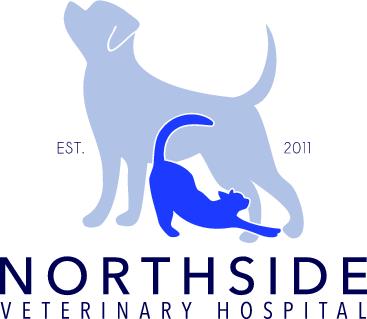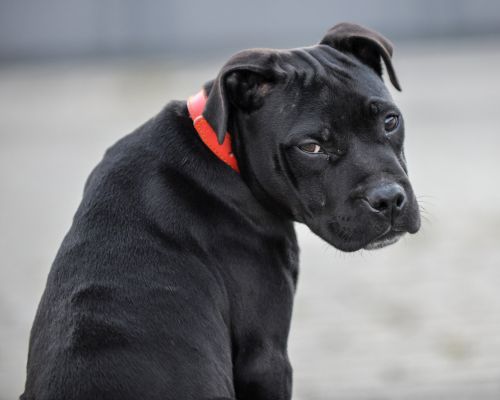Pet Tibial Crest Avulsion
The lower hind legs consist of two bones between the knee and ankle joint: the fibula and tibia. The tibia supports more significant weight, while the fibula supports less weight.
Pet Tibial Crest Avulsion in Shawnee, OK
Tibial fractures are common in cats and dogs, primarily affecting puppies since their bones are softer than adult dogs, although adult dogs can also be affected. Additionally, young puppies under ten months are commonly affected by tibial crest avulsion fractures since their bone plate has not fully fused (closed) to the rest of the bone.
Pet Tibial Crest Avulsion
The upper and lower region of the tibia bones has a very soft region known as the growth plate, where the bone grows from. An untreated tibial crest avulsion fracture results in poor knee joint and leg function.
The tibial tuberosity attaches the patella to the tibia with a tendon from the quadriceps muscle group. The tibial tuberosity is a bump on the top and front of the tibia, the bone below the knee joint. An avulsion (tearing away from a body part) fracture occurs when the patella tendon pulls from the quadriceps muscles, tendon, or ligament.
Tibial Crest Avulsion Fracture Signs and Symptoms
You might notice the following fracture signs and symptoms in your dog:
- Lameness
- Swelling in front of the knee joint and the hind leg
- Pain
- Depression
- Lack of appetite
- Abnormal bone conformation
- Limb stiffness
- Difficulty walking
- Shorter leg than the others
- Decreased weight-bearing on the affected leg
- Reluctance to move
Some fractures are minor and can resolve without surgery by strictly resting and restricted activity for several weeks.
Causes of Tibial Avulsion Fractures
Most tibial fractures are caused by trauma, such as falling from the stairs or bed and landing with a flexed knee, resulting in a tear in the bone fragment. Other causes include:
- Fast-moving activities
- Slipping or sliding on hardwood floors
- Too much exercise or overload of an event, for example, getting stuck in a hole or opening when running
- Long-term damage may be due to a congenital abnormality
To avoid fractures in puppies, do not allow your puppies to stay on furniture unsupervised since they might fall. When holding puppies, or small dog breeds, be careful not to drop them and do not encourage them to jump on or off sofas, beds, or high places. You can carry them up or down the flight of stairs to keep them safe.
Diagnosis of Tibial Crest Avulsion Fractures
Your veterinarian will perform a general examination, take your dog’s medical history, and ask for details if you witnessed the stumbles or falls. A physical examination and an orthopedic evaluation will be performed to determine the extent of the damage to the limb.
If your pet has life-threatening injuries from severe trauma, the injuries will be treated first. Other tests include:
- Leg palpitation: This helps the veterinarian to feel for swelling over the top front of the tibia, pain when flexing or extending the limb, and check if the knee cap is higher than usual since it is no longer attached to the tibia.
- Blood test: To ensure your pet is healthy enough for surgery, give more information on organ function and check for infection.
- Imaging tests: These may include X-rays to assess the damage and to plan for surgery. To make a comparison and to confirm the diagnosis of the displacement of bone fragments. The X-ray may be performed under sedation or anesthesia.
Treatment of Tibial Crest Avulsion Fracture
Surgery is the best treatment for a tibial crest avulsion fracture since it fixes the bone back in position to prevent the bone fragment from pulling by the quadriceps muscles or knee joint ligament. Surgery is performed under general anesthesia.
Surgery involves cutting the skin, exposing the fracture, and inserting one or more pins and a tension band cerclage wire for additional support. X-rays may be taken to assess the position of the implant and check the bone’s realignment.
The proximal tibial epiphysiodesis (PTE) corrects the cranial cruciate ligament rupture in growing dogs. This involves cutting the tibia and moving it forward to stabilize it in its new position.
In some cases, the veterinarian may choose to rest the leg if the fracture is not severe to minimize swelling. Another option may be a leg cast if the displacement is minimal for two to three weeks.
Recovery of Tibial Tuberosity Avulsion Fractures in Dogs
For close monitoring, your dog will remain in the hospital overnight or for several days, depending on his condition. A padded bandage will be applied to keep the incision site clean and prevent infecting it. A cast may also be used for some fractures for proper healing. Antibiotics, pain relief medication, and anti-inflammatories will be prescribed.
Your veterinarian will give you post-operative instructions that should be keenly followed to avoid complications and for a fast recovery. Avoid swimming and baths for your pet until the incision site is healed. You can ask your veterinarian when it is allowed to do so.
Movement and exercise should be restricted for six weeks during the post-operative recovery period. The incision site should be closely monitored to assess healing and to check if there is abnormal drainage. Inform your veterinarian immediately if you notice anything unusual.
After 10 to 14 days, stitches and staples will be removed after surgery. Implants, pins, and wires may also be removed because they may interfere with normal bone lengthening and growth. Sometimes, they may be left in place if your veterinarian feels they won’t cause any issues.
A follow-up visit with your veterinarian after several weeks is essential for evaluating bone healing through new radiographs and monitoring your dog’s health. It also helps establish whether increasing your pet’s physical activity and exercise levels are safe.
Prognosis
The prognosis of tibial crest avulsion fracture is good and offers several benefits, including a speedy recovery, improved range of motion of the joints, early use of the leg after surgery, and the ability to return to athletic activity and exercises after recovery.
Rare complications include infections, breaking of the metal pins and wires, shifting of the fracture, and malalignment of the limb after healing. Sometimes, the tibial tuberosity may fuse prematurely after a repair, interfering with knee function.
At Northside Veterinary Hospital, we care about the health of your pets. Contact us today for effective treatment options for a tibial crest avulsion fracture, or schedule an appointment. We are glad to help.

